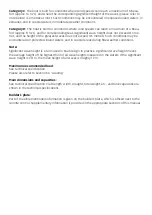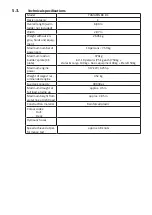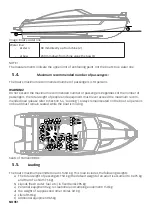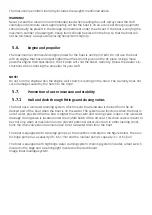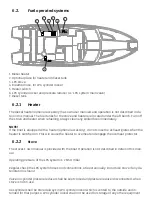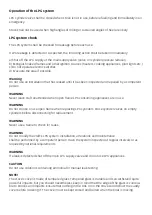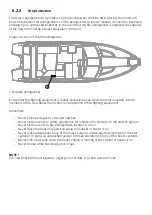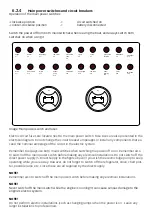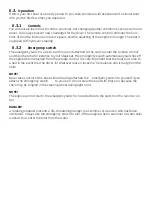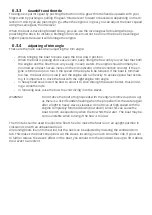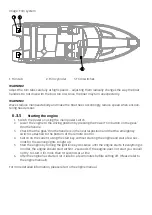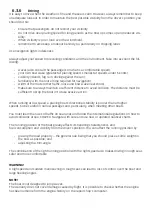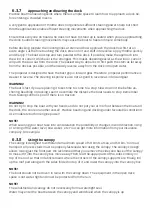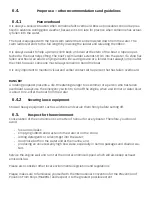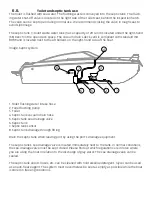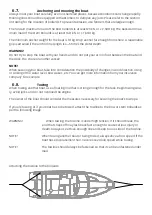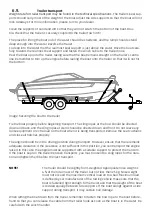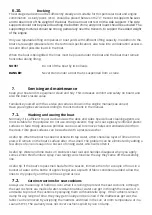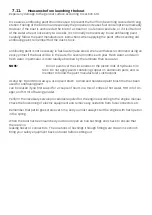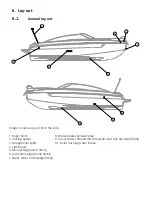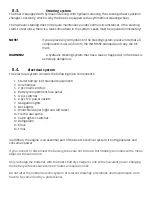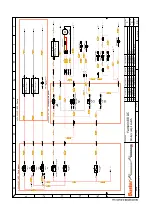
6.3.6
Driving
It is easy to drive when the weather is fine and the sea is calm. However, always remember to keep
an adequate lookout. In order to maintain the best possible visibility from the driver’s position, you
should do this:
-
Ensure that passengers do not restrict your visibility.
-
Do not drive near planing speed for long periods, as the bow up comes up and reduces visi-
bility.
-
When visibility is poor, look over the windshield.
-
remember to also keep a lookout behind you, particularly on shipping lanes
Use navigation lights in darkness.
Always adjust your speed to prevailing conditions and the environment. Take into account the fol-
lowing:
-
waves (also consult the passengers on what is a comfortable speed);
-
your own bow wake (greatest at planing speed, smallest at speeds under 5 knots);
-
visibility (islands, fog, rain, driving against the sun);
-
familiarity with the route (time required for navigation);
-
width of the route (other traffic, noise and bow wake near shore).
-
Make sure to always maintain a sufficient distance to avoid collision. The distance must be
sufficient to stop the boat or to take evasive action.
When running at low speed, a planing boat’s directional stability is poorer than at higher
speeds. So be careful in narrow passages and, particularly, when meeting other boats.
You must learn the rules of traffic on sea lanes and follow the international regulations on how to
avoid collisions at sea, COLREG. Navigate with care and use new or updated nautical charts.
The running position of the boat greatly affects its handling characteristics and
fuel consumption and visibility from the driver’s position. You can affect the running position by:
-
placing the load properly – the general rule being that you should place as little weight in
the bow as possible; and
-
adjusting the trim angle.
The combination of the right running position with the right speed also makes driving in rough seas
safer and more comfortable.
WARNING!
A high speed and sudden manoeuvring in rough seas can lead to loss of control over the boat and
large heeling angles.
NOTE!
The boat is not designed to jump waves.
The warranty does not cover damage caused by flight. It is possible to check whether the engine
has been airborne from the engine history on the repair shop’s computer.
Summary of Contents for 88 Day Cruiser
Page 1: ...Yamarin 88 Day Cruiser Owner s manual Käyttäjän käsikirja Användarhandbok ...
Page 2: ......
Page 3: ...Yamarin 88 Day Cruiser Owner s manual ...
Page 44: ......
Page 45: ...Yamarin 88 Day Cruiser Käyttäjän käsikirja ...
Page 85: ...Yamarin 88 Day Cruiser Användarhandbok ...
Page 125: ......


